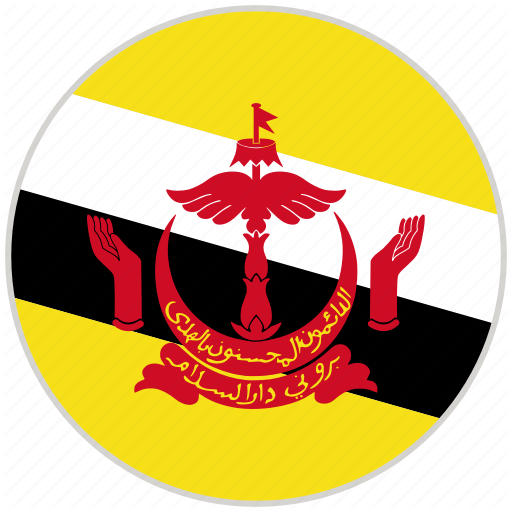Working Group Report on East Asian Trade and Investment Facilitation
10 August 2010 Beijing, China
Introduction
NEAT Working Group Meeting on East Asian Trade and Investment Facilitation (TIF) was held in Beijing, China on 25 June 2010. NEAT members and experts from the ASEAN + 3 countries and the ASEAN Secretariat took part in this meeting. There were an opening session, three panel discussions and a wrap-up session.
Amb. Zhao Jinjun, President of China Foreign Affairs University, and Prof. Huang Weiping from Renmin University of China, delivered keynote speeches at the Opening Session. The participants had candid discussions on three panel topics: 1) East Asian Trade and Investment Facilitation in World Economic Recovery: Opportunities; 2) East Asian Trade and Investment Facilitation in World Economic Recovery: Challenges and Obstacles; and 3) Policy Recommendations to Promote East Asian Trade and Investment Facilitation in Post-Crisis Era. Professor Qin Yaqing, Country Coordinator for NEAT China and Executive Vice President of China Foreign Affairs University, wrapped up the meeting.
I. TIF Cooperation in East Asia: Latest Developments and Achievements
The global financial crisis has been reshaping the international economic order; East Asia has thus become a region on the rise in the world economic structure and the global economic governance. Trade and investment facilitation (TIF) is a significant aspect of economic cooperation. For East Asia, TIF cooperation can help reduce regional trade inefficiency, remove market access barriers, expand intra-regional demands, and solidify the foundation for East Asian economic development. It is also an effective way for East Asian countries to get better adapted to the new external economic and trade environment in the post-crisis era.
TIF cooperation in East Asia has great potential. At present, all economies in the region have participated positively in various TIF cooperative mechanisms.
1. TIF cooperation under APEC
Since the issuance of APEC Economic Leaders' Declaration of Common Resolve (the Bogor Declaration), APEC members have made remarkable achievements in TIF cooperation, especially in customs procedures, standardization and conformance, business mobility and e-commerce through the implementation of the two APEC's Trade Facilitation Action Plans (TFAP I & II), which led to a reduction in trade transaction costs by 5% between 2002 and 2006 and additional 5% between 2007 and 2010. In addition, APEC has implemented an ambitious APEC's Investment Facilitation Action Plan(IFAP), contributing to a more transparent, stable and efficient trade and investment environment with comparatively lower transaction cost in the Asia Pacific region.
2. TIF cooperation under AFTA
In an effort to achieve its goal of building the ASEAN Community by 2015, ASEAN members have conducted TIF cooperation in an orderly manner through such arrangements as ASEAN Customs Valuation Guide and Single Window Agreement.
In trade facilitation, after seven years of extraordinary efforts, ASEAN Customs has been able to reduce time required for Customs clearance from several days to about two hours, on average. The Green Lane system provides speedy customs clearance for CEPT goods. Similar initiatives have also been adopted by several ASEAN Member Countries such as the Gold Card Program in Indonesia, Super Green Lane in the Philippines and Single Window in Singapore.
In investment facilitation, since the signing of ASEAN Investment Area Framework Agreement in October 1998, ASEAN members have been making constant efforts to integrate their regional market so as to build a unified, transparent and free "single investment area". For instance, ASEAN Investment Area Framework Agreement has been activated, which aims at removing intra-regional investment impediments through the implementation of an investment liberalization plan so that ASEAN investors are able to invest freely in all fields by 2010 and non-ASEAN investors will be able to do so by 2020.
3. TIF cooperation under GMS
Since the Eighth Ministerial Conference on Sub-regional Cooperation of ASEAN in October 1998, GMS has made notable progress in FTA cooperation, as exemplified by the Ten-Year Strategic Framework for the GMS Program formulated in 2001, GMS Cross—Border Transport Agreement in 2003, and the Strategic Framework for Action on Trade Facilitation and Investment in GMS in 2005. The last was formulated by the governments of China, Cambodia, Laos, Myanmar, Thailand and Vietnam together with Asian Development Bank for a five-year period of time and defined four priority fields for cooperation including customs regime, quarantine measures, trade logistics, and business mobility. These agreements and strategic frameworks serve as guidelines for trade and investment facilitation cooperation in GMS, coordinated and concerted actions among its members and capacity-building for its comparatively less developed members.
4. TIF cooperation among China, Japan and ROK
In recent years, remarkable progress has been made in TIF cooperation among China, Japan and ROK. With the approval of the Action Plan to Improve Business Environment in December 2008, the CJK trilateral investment agreement is to be concluded after several rounds of negotiations. In early May of 2010, the first round of the joint study on the trilateral FTA by government officials, business and academic participants from China, Japan and ROK was formally launched. "Outlook for 2020" issued in the third meeting of leaders of China, Japan and ROK sets down guiding principles for trilateral cooperation for the following decade, and specifically stipulates their cooperation in harmonizing standards and removing technical barriers for trade. In addition, a permanent secretariat will soon be established to institutionalize the trilateral cooperation.
5. TIF cooperation under East Asian bilateral FTAs
Most bilateral FTAs( including ASEAN+1 FTAs) in East Asia contain provisions related to TIF cooperation. Take China-ASEAN FTA for instance, the Framework Agreement on Comprehensive Economic Cooperation between ASEAN and China signed in November 2002 requires establishing effective trade and investment facilitation measures, including, but not limited to, simplification of customs procedures and development of mutual recognition arrangements, and facilitating trade in goods and services, and investment through standards and conformity assessment, technical and other non-tariff trade barriers removal, customs co-operation, and capacity building.
The above-mentioned TIF cooperative mechanisms are mutually enhancing and complementary. They upgraded TIF cooperation level in the region, and laid a solid foundation for further TIF cooperation in East Asia in the post-crisis era.
II. Future TIF Cooperation in East Asia: Obstacles and Challenges
In a nutshell, TIF cooperation in East Asia faces both hardware challenges as represented by its weak infrastructure, and software challenges in its institutional construction.
1. Poor infrastructure and hardware insufficiency for furthering TIF cooperation in East Asia
Infrastructure is a key factor for TIF cooperation. However, some countries in East Asia have poor infrastructure facilities and inadequate investment in transportation, communication, quarantine and customs clearance, which make it hard for these countries to meet the needs of soaring trade and FDI in this region, seriously hinder free flow of goods and capital, and pose obstacles to continued TIF cooperation.
2. Disparity in development levels and different perceptions and capability in TIF cooperation
East Asian countries are at different stages of economic and institutional development, and consequently, they have different perceptions towards TIF. Such differences hobble further and deeper TIF cooperation in the region.
A country's perception towards TIF is directly related to its economic development level; the more developed economies with higher per capita GDP and greater ability to conduct foreign trade and overseas investment, usually, have more positive perceptions toward TIF cooperation. Due to large disparities in development levels, East Asian countries have different perceptions and capability in TIF cooperation. Singapore, Malaysia and Japan have better TIF performance, and are more proactive and capable in promoting and implementing TIF cooperation. The less developed countries in East Asia with lower TIF levels have less dynamism and capability to promote and to implement TIF cooperation. Such circumstances not only constrain their foreign trade and FDI inflows, but also impede further development of intra-regional trade and investment in East Asia, exerting negative impact on the sustainable development of the region as a whole.
3. High cost and affordability of less developed countries
Reform of customs authorities is vital to the success of TIF cooperation. But to most developing countries in East Asia, especially the comparatively less developed ones, relevant reforms like modernization of customs clearance, setup, maintenance and upgrading of EDI, and connection of networks of government departments, customs and enterprises, all involve high costs that are not affordable for them.
In addition, TIF cooperation is different from trade and investment liberalization in that TIF requires constantly improving the administrative capabilities of the government and quality of its human resources. TIF calls for a more transparent, convenient and efficient trade and investment management system. It even involves revision of domestic laws and reform of economic systems, and need greater coordination and collaboration among countries. To East Asian countries that have very different political and social systems, especially to the comparatively less developed ones with their TIF at their initial stage, these are all arduous tasks which can not be accomplished in a short time span.
4. Complex investment agreements and domestic institutions
The network of international investment agreements (IIAs) has expanded to encompass more than 5,700 different agreements, with almost every country in the world being part to at least one of the bilateral investment treaties, double taxation treaties and other international agreements with investment provisions, such as free trade agreements and economic cooperation agreements that make up this system. The universe of IIAs has not only grown in numbers, but also in complexity;agreements increasingly overlap and multifaceted. Besides, countries in East Asia have unaligned national laws,procedures,rules and regulations for investment. Such a complex system of agreements and domestic institutions lacks coordination and unification. Therefore, it is an urgent task for East Asia to coordinate and harmonize international investment policies and to make them more consistent with one another.
5. Difficult quantitative assessment of TIF cost-benefit
TIF is difficult to be assessed in a quantitative manner in terms of its cost-benefit. Without persuading cost-benefit analysis, policy-makers in some countries might be reluctant to invest too much to improve their TIF performance and to step up TIF cooperation. Difficulties and problems loom ahead as disparities in their development levels, lagging infrastructure levels, poor management, and inconsistent policies and legislations all need to be addressed.
III. A Framework for East Asian Trade and Investment Facilitation Cooperation
1. Objectives
East Asian cooperation in trade and investment facilitation should aim at narrowing the development gap, sustaining economic development and promoting common prosperity of the people in the region. Specific goals should be as follows:
- to ameliorate trade and investment environment in East Asia;
- to present and implement a practical action plan with specific trade and investment facilitation measures so as to accelerate East Asia economic integration and East Asia FTA building; and
- to reduce transaction costs of intra-regional trade.
2. Guiding principles
Given different development levels among the Member States, a few guiding principles should be adhered to in East Asia cooperation in trade and investment facilitation, which include comprehensiveness, flexibility, transparency, comparability and inclusiveness.
Comprehensiveness means that the cooperation should include all Member States, cover all aspects of trade and investment facilitation, and benefit all Member States.
Flexibility means that each Member State decides the width and depth of the cooperation in which it would like to participate according to its own conditions; the Member States are allowed to follow individualized timetable. It is a way both to meet the high expectations of the Members at advanced stage and to bring along the Members at initial or medium stages through example-setting and experience-sharing. Being flexible also means both the facilitation performances of individual Member States and that of the 10+3 as a whole should be assessed.
Transparency means that the Member States should make prompt publications of domestic laws, regulations, trade polities, technical standards and management rules, so that other Members can have a full and convenient access to relevant information for monitoring and gaining maximum benefits from the facilitation measures.
Comparability means that the cooperation timetable and facilitation measures should be practical and quantifiable, so that the outcomes can be assessed quantitatively through horizontal and vertical comparisons. Quantitative assessments are an important reference for designing next step action plans.
Inclusiveness means that policy-making for regional trade and investment facilitation cooperation should be participated by the public sector, the private sector and the academia all together through close cooperation, dialogues and consultations.
3. Approaches
Multiple approaches should be taken in East Asian cooperation in trade and investment facilitation, for instance, consensus-based collective action, path-finder approach, narrowing down the development gap through capacity building, government-business-academia cooperation, and so on.
Two approaches are highlighted in the following, namely, quantitative assessment mechanism and a steering committee for EATIF.
A quantitative assessment mechanism ensures tangible outcomes of the cooperation, which includes the following elements:
- Key Performance Indicators (KPIs). KPIs should be defined for each priority area in consultation with successful practice of WB, APEC and GMS, which will be used in measuring the progress of the action plan.
- Regular reporting mechanism. Consultative Working Groups and KPI reporting formats should be set up for the priority areas. The consultative groups are responsible for updating the Ministers' Meetings with the latest progress made in the priority areas by the Member States individually and by the 10+3 collectively.
- Independent experts' team. An independent experts' team should be formed and tasked to make a mid-term assessment of the implementation of the action plan in late 2013 and early 2014, and ensure the final objective of reducing transaction cost by 5% to be achieved by 2016 .
It is necessary to establish an EATIF Steering Committee responsible for translating the agreements of 10+3 Summit and Ministers' Meeting into a specific action plan, facilitating communications and resources-sharing among the Member States and the working groups of the priority areas, monitoring and reviewing the cooperation process, updating the Economic Ministers' Meeting and Foreign Ministers' Meeting with the latest development, harmonizing individual efforts on TIF and making policy recommendations.
4. Priority cooperation areas
Priority should be given to areas that are better-conditioned and easier to achieve tangible results, for instance, rules of origin, customs procedures, standards and conformance, logistics network, and business mobility. Following actions should be taken:
- harmonize the Rules of Origin (ROO) principles of the three 10+1 FTAs; make them more transparent; bring down transaction and administration costs; avoid "spaghetti effect" as much as possible.
- simplify and harmonize customs procedures of countries in the region; make them more transparent; encourage free flow of goods within the region; improve efficiency and quality of trade data collection; optimize trade database; provide the business sector with more accurate, compatible, convenient and timely information service.
- harmonize the Member States' domestic standards with the international standards; spread the best practice of technical regulation formulation and implementation; ensure transparency of the Member States' standards and conformance measures; set up information sharing and consultation mechanisms to monitor and review the standards and conformance measures.
- harmonize the Member States' rules and regulations on trade logistics; simplify the formalities for cross-border transport of goods; standardize transportation technologies; optimize infrastructure facilities and raise speed and efficiency of regional trade logistics. And regional connectivity in all modes should be promoted by extending ASEAN Connectivity Master Plan to reach out the Plus Three countries. So "ASEAN+3 Connectivity Partnership" should be initiated to support ASEAN Connectivity Master Plan for this could significantly help facilitate a greater flow of trade and investment in the region.
- strengthen facilitation cooperation on visa application procedure and standardization for cross-border business movement; simplify the formalities of travelling documents inspection and immigration legislature; draw from APEC Business Travel Card Scheme and simplify cross-border personnel movement with business purposes such as signing contracts, participating business meetings, negotiating investment; provide visa facilitation; make visa information and application documents available on internet.
5. A Roadmap
A roadmap for East Asian trade and investment facilitation cooperation should be drafted. Feedbacks and recommendations should be solicited from the public sector, the private sector and the academia. The roadmap should be examined and finalized by senior officials' meeting and submitted to the 10+3 Economic Ministers' Meeting. Each Member State then should work out its individual TIF objectives and action plans accordingly. Consultative Working Groups comprising officials, business representatives and experts should be established to monitor and assess the implementation of the action plans in priority areas. The Groups should hold regular meetings, coordinate with the counterparts of the ASEAN, and submit reports to the Ministers' Meeting.
Conclusion
East Asia countries have made remarkable achievements in regional trade and investment facilitation. In the post-crisis era, it is an apropos choice for East Asia to strengthen their cooperation in this field as a means to tackle the problems and challenges of the regional economy. With political will and feasible measures of all Member States, the cooperation will narrow the development gap across the region, sustain economic growth, and bring practical benefits to peoples in the region.











.png)



.png)




